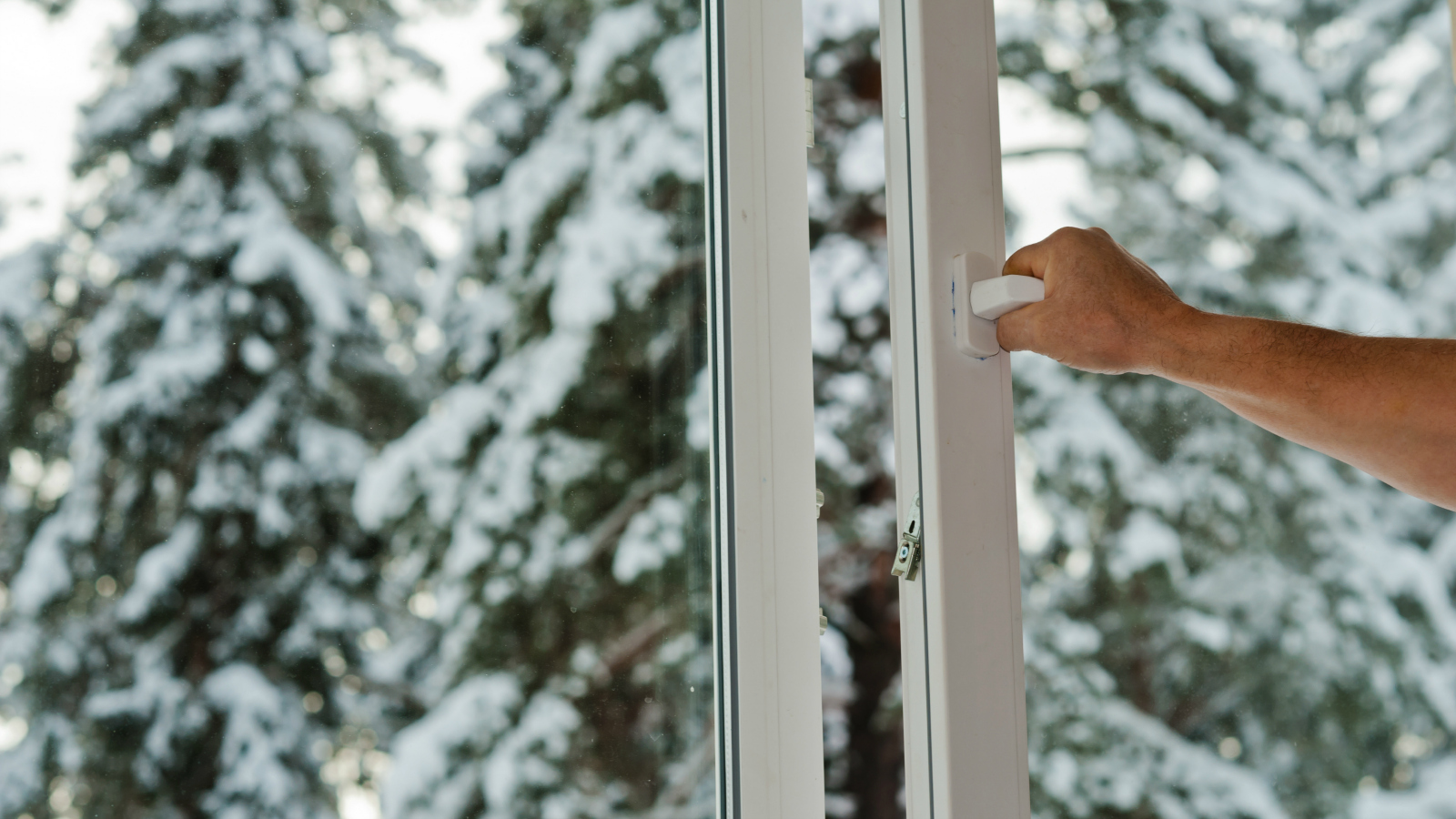Q. Dear Umbra,
I have a window in the bedroom that I like to keep open about an inch, year-round, at night only. This window is across the room, down the hall, past a stairwell, and around the corner from a thermostat that is set for 63 at night. My husband goes ballistic and states that our bill will soar. I have gotten up in the night to read the ambient temperature and can find no reason to think that this is having any effect. Please help me. I get so claustrophobic without at least a trace of fresh air.
Suzy K.
Silverdale, Washington
A. Dearest Suzy,
Usually, when I get letters like this, it’s the energy miser in the house writing: My crazy spouse insists on leaving the window open at night in winter! What a disaster! So it’s lovely to hear the other side of the story. Cohabitation is certainly a lesson in compromises great and small, isn’t it? Perhaps some facts from an outside observer can help you two work this out.
First, the bad news: Your hubby is right that leaving a window open while the heat is on will certainly cost you money (and burn more of whatever power source you use for fuel). Any chink in your home’s armor — or thermal envelope, in energy nerd circles — allows heated air to escape, which kicks your heater into overdrive to replace it. Some experts estimate an open-window policy might even double your heating costs. You’ll see exactly what it means for your home when the bill arrives.
Now, the fact that your thermostat lives so far away from your open bedroom window could be mitigating the problem a little. Thermostats come equipped with sensors to measure your home’s climate: When they detect the ambient temperature has dropped below your set minimum, on goes the heater, and when the place is back up to the proper warmth, it powers down. This little dance goes on all winter. It’s important to place that thermostat carefully to ensure interior comfort and prevent wasting energy: You don’t want it in direct sunlight, near steamy bathrooms, or near drafts, all of which can throw off the sensors. If your thermostat were in your bedroom, you can be certain your heater would be sweating all night to maintain equilibrium.
Still, that fresh, cold air (from the window and from any other leaks in your thermal envelope) will eventually make its way down the hall and around the corner to the thermostat. I’m not surprised your midnight investigations haven’t uncovered this, Suzy. After all, your thermostat’s mission is to keep your home at 63 degrees. So it will fire up that heater as much as is necessary to keep the ambient temp reading 63 when you check.
Now, I don’t want to hand this one entirely over to your spouse. Fresh air is certainly important to prevent not just your claustrophobia, but also indoor air pollution — a particular concern for more modern, better-insulated houses. The highest-tech solution? A whole-house ventilation system, which pulls in fresh air and exhausts stale air in a much more controlled manner than a cracked-open window. The fanciest of these are heat recovery ventilators (HRVs) and energy recovery ventilators (ERVs): Both systems transfer 70 to 80 percent of the heat from the warm outgoing air to the cold incoming air, greatly reducing the pressure on your heater. (The difference between the two is that ERVs also transfer water vapor for more humidity control.) True, such systems are quite pricey — several thousand dollars with installation costs — but perhaps it’s just the compromise you and your husband need to stay away from the ballistic button.
If that’s a no-go, exhaust ventilation systems represent the next step down on the hierarchy. These work by changing the pressure of your home’s interior, either through exhaust or supply fans (you’re probably already familiar with one example of such a tool, the bathroom fan). They’re cheaper and simpler, but also less effective than HRVs and ERVs. And at the bottom of the list, there’s always just opening the window once a day for a max of 15 minutes. Yes, this will increase your heating bill somewhat, but it’s worlds better than an all-night vent-a-thon, and it will still promote some healthy air exchange.
Here’s hoping this discussion leads to sweet dreams for you both. After all, leaving the window open this time of year means Jack Frost can sneak right inside and start nipping at your nose.
Toastily,
Umbra



